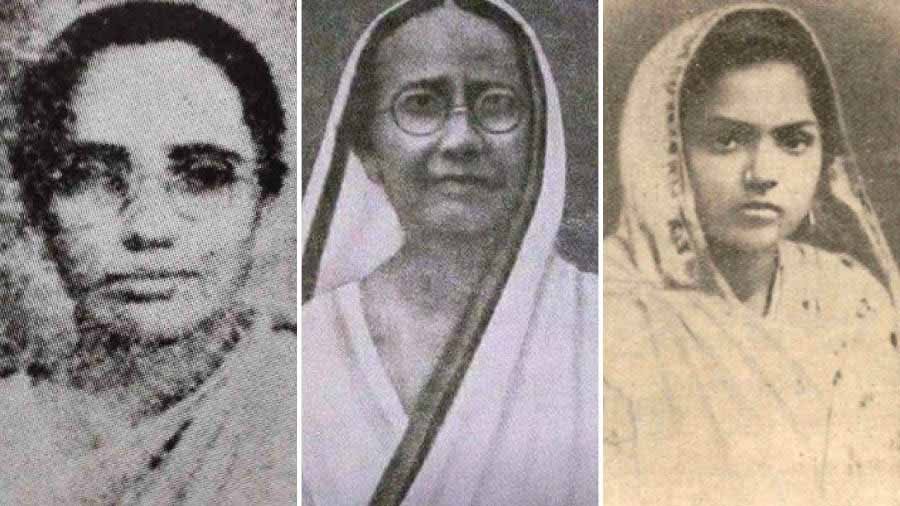Why in the News?
- The Kuttiyadi coconut, a traditional variety from Kozhikode district in Kerala, is now being considered for a Geographical Indication (GI) tag.
- The initiative has been taken jointly by the Kerala Agricultural University (KAU) and the Kavilumpara gram panchayat, which have begun the process of preparing the necessary documents.
Key Highlights
- Unique Features of the Kuttiyadi Coconut
- The Kuttiyadi coconut is a high-yielding variety that begins to produce nuts within five years of planting, which is faster compared to many other varieties.
- The tree has a very strong trunk, which enables it to withstand harsh weather conditions and resist many common pests.
- It has an exceptionally long lifespan, with many trees surviving for more than a century.
- The fruit itself is larger and heavier, while the kernel is much thicker than other coconuts. This makes it ideal for producing greater quantities of coconut oil.
- Farmers’ Experience and Local Importance
- Farmers in Kuttiyadi have tested other coconut varieties, but none have matched this variety in terms of yield, pest resistance, and adaptability to the local climate.
- According to local cultivators, the Kuttiyadi coconut has proven to be the most dependable and profitable variety for their region.
- Because of these qualities, the Kuttiyadi coconut has become a central part of the agricultural identity of the area.
- Wider Adoption Across Kerala
- Recognising its qualities, the Kerala Department of Agriculture regularly sources seedlings and saplings from Kuttiyadi.
- These seedlings are then distributed across the state, which shows the variety’s wider demand and its growing importance in Kerala’s coconut economy.
- Problems Faced by Farmers
- Despite its strengths, farmers face serious losses due to the ‘Mandari’ or coconut mite, a pest that attacks the nuts and reduces their quality and yield.
- Farmers complain that the government has not taken sufficient steps to help them manage the pest.
- The Agriculture Department, according to local cultivators, does not even accept mite–affected coconuts for official procurement, which directly affects farmer incomes.
- Steps Taken Towards GI Tagging
- The idea of seeking a GI tag was first suggested by scientists from the Central Plantation Crops Research Institute (CPCRI).
- Three years ago, the Kavilumpara gram panchayat initiated the process. It allocated ₹3 lakh in its budget to support preliminary work.
- The documentation work was handed over to the Kerala Agricultural University (KAU), which is preparing the detailed reports needed for the GI application.
- According to the panchayat president, George Ponnattil, the GI tag would provide much-needed recognition and help farmers market their produce more effectively.
About GI Tags
Meaning and Definition
- A Geographical Indication (GI) tag is a sign used on products that:
- Have a specific geographical origin.
- Possess unique qualities, reputation, or characteristics linked to that origin.
- GI is a form of Intellectual Property Right (IPR).
- It helps producers claim the product’s uniqueness and prevents misuse or imitation.
International Recognition
- Paris Convention (1883):
- Provides a framework for protecting industrial property rights, including GIs.
- Introduced principles of national treatment and right of priority.
- Lisbon Agreement (1958):
- Establishes an international system for registering and protecting appellations of origin (a type of GI).
- Ensures recognition across all contracting parties.
- Madrid System:
- Primarily for trademarks, but can also protect GIs using collective or certification marks.
- TRIPS Agreement (WTO):
- Recognises GIs as a part of global intellectual property rights.
- Mandates legal protection of GIs among member nations.
GI Tag in India
- Governed by the Geographical Indications of Goods (Registration and Protection) Act, 1999.
- Authority: Geographical Indications Registry, under the Ministry of Commerce and Industry (DPIIT).
- Provisions of the Act:
- Establishes a registry to process GI applications.
- Registration criteria: Product must show a clear link between its quality/reputation and place of origin.
- Duration: Protection is granted for 10 years, renewable indefinitely.
- Enforcement: Civil and criminal penalties for infringement.
- Allows registration of authorised users and producer associations.
Benefits of GI Tags
- Legal Protection:
- Prevents unauthorised use, imitation, or misrepresentation.
- Gives producers the exclusive right to use the GI tag.
- Economic Advantages:
- Enhances marketability and competitiveness of products.
- Helps producers command premium prices, especially in export markets.
- Cultural and Social Benefits:
- Preserves cultural heritage and traditional practices linked to the product.
- Promotes rural development and community empowerment.
- Sustainability:
- Encourages sustainable production practices.
- Contributes to environmental conservation in the designated region.
Types of Products Eligible
- Agricultural products: Rice, spices, fruits, etc.
- Foodstuffs: Sweets, processed foods, wines, spirits.
- Handicrafts and textiles: Sarees, carpets, metalwork.
- Industrial products: Specialised traditional goods.
- Condition: Each product must show unique qualities or characteristics tied to its origin.
Eligibility for Application
- Any association of persons, producers, or traders can apply.
- Applicants must provide:
- Proof of uniqueness of the product.
- Historical evidence linking the product to its region.
- Detailed production process that shows the special characteristics.
GI Tag as an Intellectual Property Right (IPR)
- Recognised under TRIPS Agreement as a form of IPR.
- Protects the collective rights of producers in a given region.
- Prevents misuse or misappropriation of traditional products by outsiders.
- Encourages fair trade practices and promotes sustainable rural development.
Implications
- Better Market Recognition and Higher Prices
- GI status would allow Kuttiyadi coconuts to be sold as a region-specific and premium product.
- This recognition could help farmers command higher prices in both domestic and export markets.
- Conservation of Local Variety
- With GI recognition, there would be greater awareness of the uniqueness of Kuttiyadi coconut.
- This would encourage its continued cultivation and prevent its replacement by other commercial hybrid varieties.
- It would also contribute to conserving agricultural biodiversity in Kerala.
- Encouragement for Research and Innovation
- Once GI recognition is achieved, more research attention and government funds may flow in to improve the productivity of this variety.
- Problems like the coconut mite can be studied in depth, and integrated pest management practices can be developed for farmers.
- Scope for Value Addition and Employment Generation
- The thick kernel and higher oil yield of Kuttiyadi coconuts create opportunities for value-added products such as coconut oil, desiccated coconut, coconut milk powder, and other processed items.
- Small-scale processing units and cooperatives can emerge in the region, generating local employment and improving rural incomes.
- Boost to Regional Branding and Rural Development
- A GI tag would not only bring recognition to Kuttiyadi coconuts but also to the region itself, enhancing its brand image.
- It would add to Kerala’s reputation for high-quality agricultural products, along with other GI-tagged crops like Malabar pepper and Wayanad rice.
- This recognition could also support agri-tourism initiatives, bringing more visitors to the area and creating alternative sources of income.
Challenges and Way Forward
| Challenges | Way Forward |
| Farmers face heavy losses due to the Mandari pest (coconut mite). | Invest in scientific research, pest–resistant varieties, and farmer training in integrated pest management. |
| Farmers feel government support is inadequate, especially for damaged produce. | Create compensation schemes, quick response teams, and provide subsidies for pest control. |
| The GI application process is lengthy and requires extensive documentation. | Allocate more funds, use technical experts, and fast-track documentation through KAU and CPCRI. |
| Ensuring quality control and authenticity after GI recognition. | Develop strict quality standards, certify nurseries, and create a traceability system for genuine Kuttiyadi coconuts. |
| Lack of processing facilities and market linkages in the local area. | Promote small–scale processing industries, form Farmer Producer Organisations (FPOs), and connect with domestic and export markets. |
| Limited awareness among farmers about the benefits of GI status. | Conduct awareness campaigns, training workshops, and provide guidance on how GI can improve incomes. |
Conclusion
The Kuttiyadi coconut is not just another crop but a symbol of the agricultural strength of northern Kerala. Its early bearing, long lifespan, strong trunk, and high oil yield make it a unique and valuable variety. The move to secure a GI tag reflects an effort to give farmers the recognition and economic benefits they deserve. If successful, the GI tag can enhance incomes, preserve biodiversity, and strengthen local branding. However, for the benefits to reach farmers, equal attention must be given to tackling pest attacks, building processing facilities, ensuring quality standards, and supporting farmers with government schemes. With coordinated efforts, the Kuttiyadi coconut can emerge as a model for how traditional crops can be protected and promoted in the modern economy.
| Ensure IAS Mains Question
Q. Discuss the significance of granting a Geographical Indication (GI) tag to the Kuttiyadi coconut of Kerala. Highlight the benefits and challenges associated with this recognition. (250 words) |
| Ensure IAS Prelims Question
Q. Consider the following statements about the Kuttiyadi Coconut recently in the news: 1. It is a high-yielding coconut variety from Kozhikode, Kerala. 2. The variety is known for its strong trunk and long lifespan of more than 100 years. 3. Its kernel is thinner than other coconut varieties, which makes it less suitable for oil extraction. 4. The Kavilumpara gram panchayat and Kerala Agricultural University are working towards obtaining a GI tag for this variety. Which of the statements given above are correct? a) 1 and 2 only b) 1, 2 and 4 only c) 1 and 3 only d) 2 and 4 only Answer: b) 1, 2 and 4 only Explanation: Statement 1 is correct: Kuttiyadi coconut is a unique high-yielding variety from Kozhikode district in Kerala. Statement 2 is correct: It has a very strong trunk and a life expectancy of more than 100 years. Statement 3 is incorrect: Its kernel is thicker than other varieties, which makes it more suitable for oil extraction, not less. Statement 4 is correct: The Kavilumpara gram panchayat and Kerala Agricultural University are leading the process for its GI tag application. |





